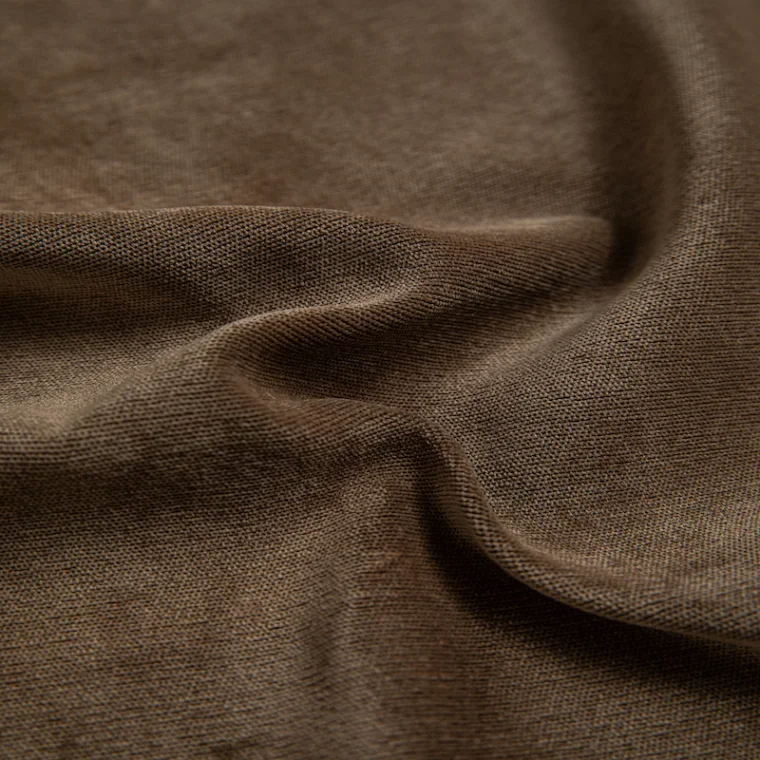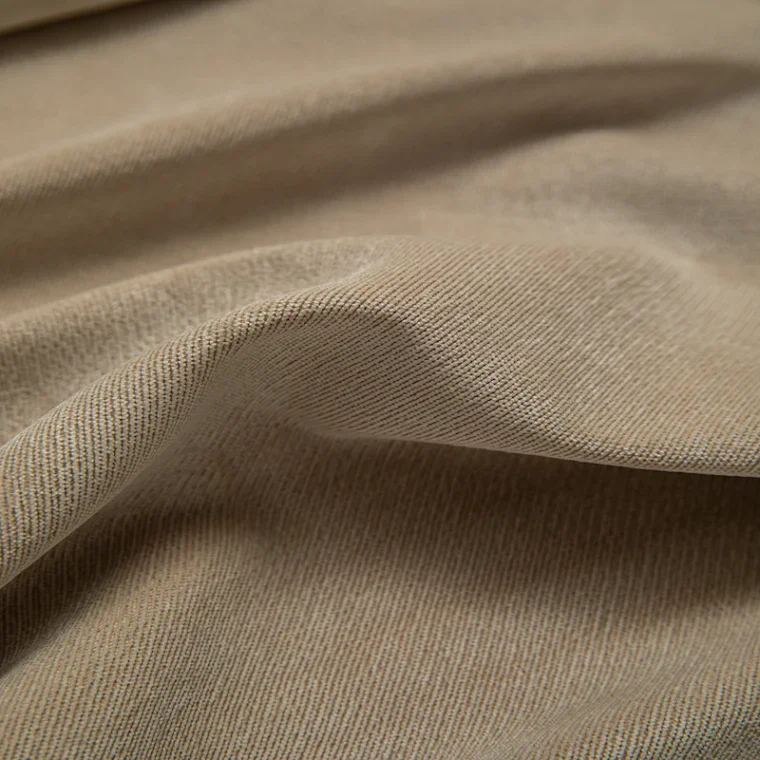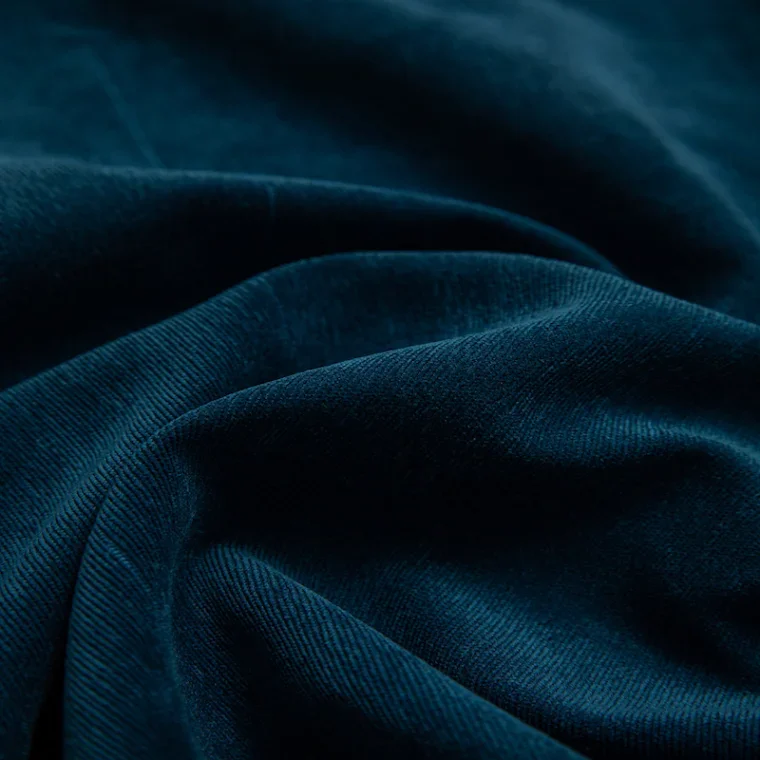Velvet fabric is renowned for its luxurious texture and rich appearance, making it a popular choice for clothing, upholstery, and home decor. But have you ever wondered what exactly makes up this sumptuous material? In this blog post, we will delve into the intricate world of velvet and explore the materials used to create this timeless fabric.
1. Understanding Velvet
Before we unravel the mystery of velvet's composition, let's first understand what makes it unique. Unlike other textiles, velvet has a distinct pile structure that gives it its characteristic softness and sheen. The pile refers to the raised surface made up of evenly distributed short, dense fibers. This plush texture is what sets velvet apart from other woven fabrics.

2. The Original Velvet Material: Silk
Historically, velvet was predominantly made from silk, a natural fiber produced by silkworms. Silk velvet is considered the epitome of luxury due to its elegant drape, smooth hand feel, and lustrous appearance. It has been prized for centuries and was often reserved for the elite and royal families.
3. Modern Alternatives: Cotton Velvet
While silk velvet remains a highly sought-after fabric, today's mass production and increased demand have led to the development of alternative materials. One such fabric is cotton velvet. Combining the plushness of velvet with the comfort and breathability of cotton, this variety has gained popularity among a wider audience. Cotton velvet offers a more affordable and practical option without compromising on style and comfort.
4. Blended Velvets
To enhance durability and versatility, velvet is often blended with synthetic fibers such as polyester or rayon. These blends help reduce wrinkling, improve elasticity, and make the fabric more resistant to fading and shrinking. The addition of synthetic fibers also lowers the overall cost, making velvet accessible to a larger demographic.
5. Other Velvet Materials
Apart from silk, cotton, and synthetic blends, many other materials are used to create velvet-like fabrics. These include:
a) Rayon Velvet: Rayon is a semi-synthetic fiber made from regenerated cellulose. It closely mimics the softness and drape of silk velvet while being more affordable.
b) Mohair Velvet: Derived from the hair of the Angora goat, mohair velvet is recognized for its exceptional durability, sheen, and resistance to crushing. It adds a touch of opulence to any setting.
c) Synthetic Velvets: Various synthetic fibers like polyester, nylon, and acetate are used to produce velvet-like fabrics. These materials are cost-effective, easy to maintain, and offer a vast range of colors and patterns.
d) Microfiber Velvet: Microfiber is an ultra-fine synthetic fiber that can be used to create velvet with a velveteen or suede-like appearance. This material is highly stain-resistant and perfect for households with children or pets.

6. Velvet Production Process
Regardless of the material used, the production process for velvet remains similar. The intertwining weaving technique creates loops in the base fabric, which are then cut to form the pile. This intricate process requires skilled craftsmanship to achieve the desired texture and ensure uniformity throughout the fabric.
7. Uses of Velvet
Velvet fabric has a wide range of applications owing to its luxurious and tactile nature. Let's explore some of the popular uses of velvet:
a) Clothing: Velvet has been a staple in high-end fashion for centuries. It is commonly used for evening gowns, dresses, jackets, and accessories like scarves and hats. Its softness and ability to drape beautifully make it a favored choice for formal wear.
b) Upholstery: Velvet adds a touch of elegance and sophistication to furniture pieces. From sofas and armchairs to headboards and ottomans, velvet upholstery can elevate the overall aesthetic of any space. The plush texture also enhances comfort and coziness.
c) Home Decor: Velvet is popular in home decor items such as curtains, throw pillows, and bedding. Its rich texture and vibrant colors can create a luxurious and inviting atmosphere in any room.
d) Accessories: Velvet is not limited to clothing and upholstery. It is also used to create accessories such as handbags, clutches, shoes, and even jewelry. These accessories add a touch of opulence and glamour to any outfit.
8. Maintaining Velvet
To keep your velvet items looking their best, it is essential to follow proper care and maintenance practices. Here are some tips:
a) Spot Cleaning: For small stains or spills, spot cleaning is recommended. Use a soft, damp cloth and gently blot the affected area. Avoid rubbing, as this can damage the delicate fibers.
b) Dry Cleaning: For larger or more stubborn stains, consult a professional dry cleaner who specializes in treating velvet fabric. Dry cleaning ensures that the fabric remains undamaged while effectively removing stains.
c) Brushing: Regularly brush velvet with a soft-bristled brush to remove dust and
restore its pile. Brushing in the direction of the nap helps maintain a uniform appearance.
d) Storage: When not in use, store velvet items in a cool, dry place away from direct sunlight. Avoid folding or hanging them for extended periods to prevent crushing the pile. Instead, consider using padded hangers or rolling the fabric.

Conclusion
Velvet fabric, with its unique texture and timeless elegance, is created using various materials. From the opulence of silk to the practicality of synthetic blends, there is a velvet fabric suitable for every taste and budget. Whether adorning clothing, upholstery, or home decor items, velvet adds a touch of luxury and sophistication to any setting. By understanding the composition of velvet and adopting proper care practices, you can enjoy the beauty and longevity of this exquisite fabric for years to come.
Wejoy Trade Co., Ltd. factory focuses on the production of high-quality velvet, linen, artificial leather and other interior decoration fabrics. After years of hard work and customers' trust, the company has become a leading supplier of furniture and bedding parts, with operations in Europe, North and South America, Africa, the Middle East, Southeast Asia and other countries. If you have needs for velvet fabrics, please contact us.
Email:jay@wejoytrade.com